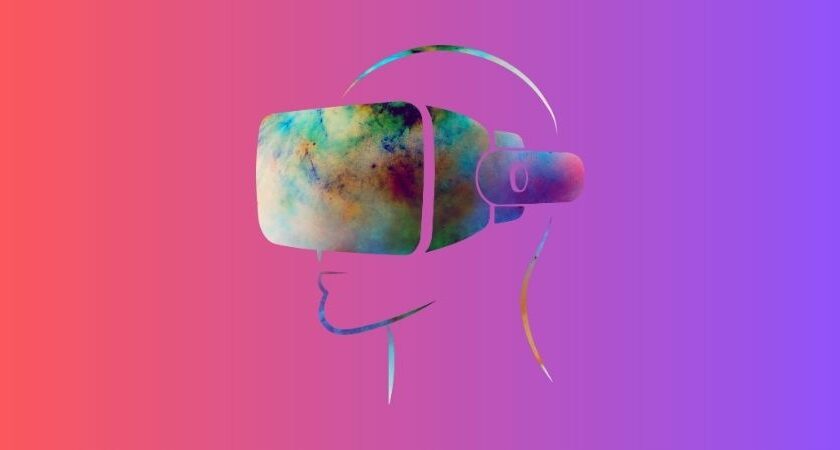In today’s hyper-competitive business landscape, companies are constantly seeking innovative ways to engage with their customers and stand out from the crowd. Virtual Reality (VR) and Augmented Reality (AR) have emerged as groundbreaking technologies that are transforming the marketing landscape.
These immersive technologies provide businesses with the ability to create captivating experiences, forge deeper connections with their target audience, and drive higher customer engagement. In this blog, we will explore the immense potential of VR and AR in business marketing, examining the benefits, use cases, and future prospects of these technologies.
Understanding Virtual Reality and Augmented Reality
Before delving into their marketing applications, let’s understand the fundamental differences between VR and AR. Virtual Reality is a technology that immerses users in a computer-generated, interactive environment, cutting them off from the physical world and transporting them to a simulated realm. Users typically wear VR headsets that track their movements, allowing them to explore and interact within the digital space.
On the other hand, Augmented Reality blends digital content with the real-world environment, enhancing users’ perceptions of the physical world. AR experiences can be delivered through mobile devices or AR glasses, overlaying virtual elements such as images, information, or animations onto the user’s real-time view.
The Appeal of Immersive Experiences in Marketing
Traditional marketing strategies often struggle to captivate audiences in a world overwhelmed by advertisements. VR and AR present a unique opportunity to break through this advertising fatigue by delivering immersive and interactive experiences that leave a lasting impact on consumers. Here are some reasons why VR and AR are gaining momentum in marketing:
-
Enhanced Customer Engagement: Immersive experiences hold people’s attention for longer periods, enabling businesses to communicate their brand story effectively.
-
Emotional Connection: VR and AR experiences can trigger emotions in users, allowing them to forge stronger emotional connections with brands.
-
Personalized Interactions: These technologies offer personalized and interactive content, tailoring experiences to individual preferences.
- Differentiation: Businesses can differentiate themselves from competitors by adopting VR and AR, showcasing their commitment to innovation.
-
Data Insights: VR and AR analytics provide valuable data on customer behavior, preferences, and interactions, aiding businesses in refining their marketing strategies.
Use Cases of VR and AR in Marketing
-
Virtual Product Demonstrations: VR allows customers to virtually experience products before making a purchase, such as test-driving a car, trying on virtual clothing, or experiencing a virtual tour of a property.
-
Interactive Retail: AR can enhance the shopping experience by overlaying product information, reviews, and promotions onto physical store shelves or e-commerce websites.
- Immersive Brand Storytelling: Brands can create compelling narratives and transport customers into virtual worlds that reflect their values and mission.
- Trade Shows and Events: VR and AR booths at trade shows enable businesses to showcase products, offer interactive demos, and leave a memorable impression on attendees.
- Virtual Showrooms: Real estate and interior design companies can create virtual showrooms, enabling clients to visualize spaces with various design options.
- AR Gamification: Brands can gamify experiences with AR elements, encouraging customers to participate in challenges and win rewards.
-
Training and Onboarding: VR can be used for employee training, simulating real-life scenarios to enhance learning and retention.
The Future of VR and AR in Marketing
As technology continues to advance, the potential of VR and AR in marketing is only set to grow. Here are some predictions for the future:
-
Mainstream Adoption: As VR and AR devices become more affordable and accessible, their adoption in marketing will become more widespread.
- Social Media Integration: Social media platforms are likely to integrate VR and AR features, allowing businesses to reach larger audiences.
- Personalization: With advancements in AI, VR, and AR experiences will become increasingly personalized, catering to individual preferences.
-
Virtual Events: VR could revolutionize events and conferences, enabling global participation without geographical constraints.
Conclusion
In conclusion, Virtual Reality and Augmented Reality are changing the face of marketing by providing businesses with innovative ways to engage and interact with their audience. These immersive technologies have the power to create memorable experiences, drive emotional connections, and differentiate brands in a crowded market.
As VR and AR become more accessible, the marketing landscape will witness a seismic shift towards more engaging and personalized experiences. Businesses that embrace these technologies early on will position themselves at the forefront of a new era in marketing, reaping the rewards of higher customer engagement, brand loyalty, and ultimately, success.
